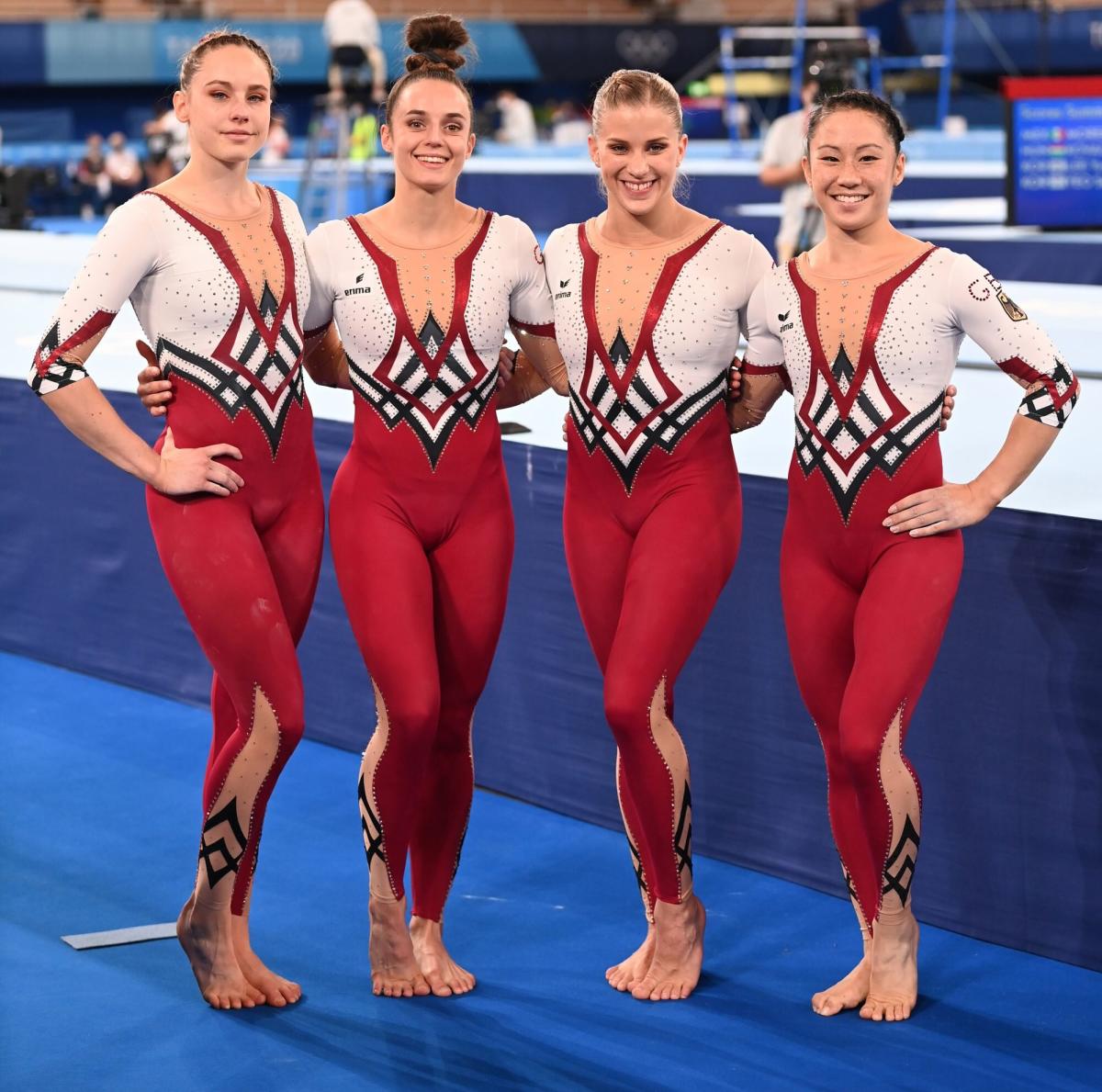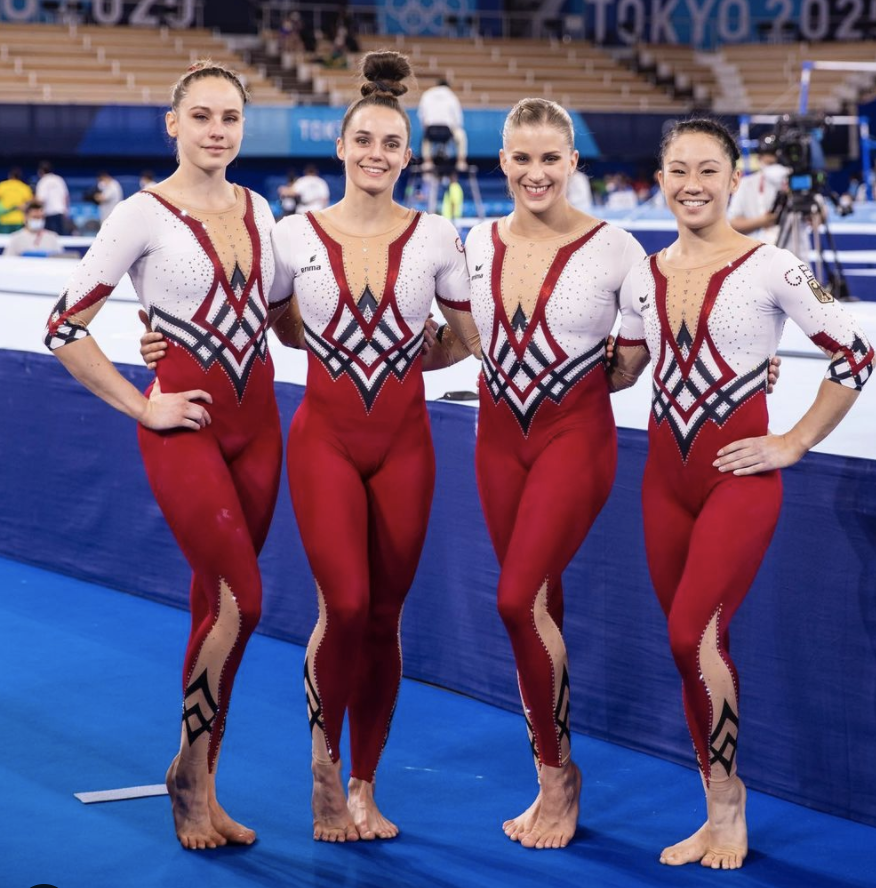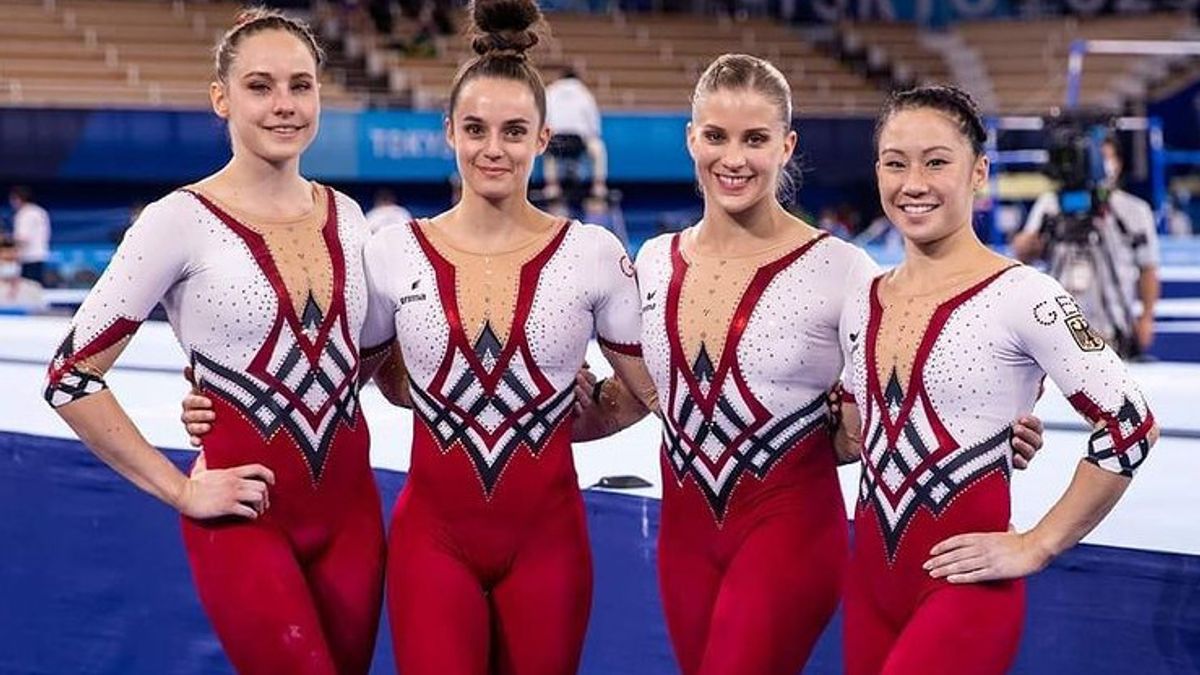Have you ever watched a gymnast perform, maybe on the balance beam or doing incredible moves on the uneven bars, and just wondered about their amazing physical abilities? It's really something to see, isn't it? The way they move, so controlled and yet so free, it almost looks like magic. You might find yourself thinking about what kind of training makes someone so strong and so flexible all at once. That powerful, graceful build is what many people call the gymnast body type, and it's a topic that sparks a lot of curiosity.
This unique physical make-up isn't just about looking a certain way; it's about what the body can do. Gymnastics, you see, is a sport that demands a lot from its athletes. It asks for great strength, quickness, and the ability to move with ease. Think about the routines: a gymnast performs a choreographed set of actions, sometimes for up to 90 seconds. These include big leaps, complex acrobatic skills, somersaults that seem to defy gravity, precise turns, and dance elements. All of this happens on a padded beam, or with rings and bars, so it takes a very special kind of physical preparation.
What we're talking about here is a body developed through systematic exercises. These exercises are meant to improve strength, agility, coordination, and overall physical conditioning. It's a sport that builds bodies ready for amazing feats, and so, you know, understanding the gymnast body type really means appreciating the intense dedication and specific training that shapes these incredible athletes.
- Twin Family Halloween Costumes
- Kylie Jenner Vodka
- Moss Basketball
- Heart Cancels Lubbock Concert
- Samantha Hanratty Nude
Table of Contents
- What is the Gymnast Body Type?
- How Gymnastics Shapes the Body
- Benefits Beyond the Gym
- Famous Gymnasts and Their Impact
- Common Questions About Gymnast Bodies
- Appreciating the Athleticism
What is the Gymnast Body Type?
When people talk about a gymnast body type, they're usually thinking about a physique that looks strong, compact, and very capable. It's a body that can perform incredible feats of movement, so it's not just about how it looks, but what it can actually achieve. This physical makeup is a direct result of the demands of the sport, which require a combination of different physical attributes working together. It’s almost like every part of their body is ready for action.
A gymnast's body is typically characterized by a good amount of muscle, especially in the upper body and core, and a lower body that is both powerful for jumps and stable for landings. They tend to be on the shorter side, which helps with certain movements and rotations, but height isn't the defining characteristic. The real story is in the way their muscles are developed and how they can use them.
Strength and Muscle Development
Strength is a very big part of the gymnast body type, you know. Think about holding yourself up on rings or balancing on a narrow beam. This kind of work builds incredible upper body and core strength. Gymnasts spend a lot of time doing bodyweight exercises, like pull-ups, push-ups, and various holds. These activities make their muscles very efficient and powerful without adding a lot of extra bulk. It’s a very functional kind of strength, really.
- Bryce Dickey
- Sandra Bernhard Relationships
- Book Club Picks May 2025
- Ukranian Onlyfans
- Kiley Nevaeh Jones
Their core muscles, which are the ones around their stomach and back, are also incredibly developed. This is because a strong core is absolutely needed for balance, stability, and controlling movements, especially during somersaults and twists. Without a strong core, those complex acrobatic skills would be nearly impossible to do safely and well.
Agility and Coordination
Agility, which is the ability to change direction quickly and smoothly, is another key trait. Gymnasts are constantly moving, twisting, and flipping, so their bodies need to react instantly. This comes from thousands of hours of practice, refining their movements until they become almost second nature. It's a rather amazing display of human control.
Coordination, the ability to use different parts of the body together in a smooth and controlled way, is also central to the gymnast body type. Whether it's connecting a series of leaps on the beam or performing a complex routine on the bars, every movement requires precise timing and coordination. This isn't just about physical training; it's also about the brain and body working together seamlessly, so it's a whole-person effort.
Flexibility and Range of Motion
When you see a gymnast, one of the first things you might notice is their incredible flexibility. They can do splits, backbends, and other movements that seem impossible to most people. This extensive range of motion is crucial for performing leaps, turns, and dance elements. It also helps prevent injuries, which is a big deal in a sport with so many demanding movements.
This flexibility is something they work on every single day, stretching and gradually increasing their body's capacity for movement. It’s not just about being "bendy"; it's about having the freedom of movement needed to execute complex skills with grace and precision.
How Gymnastics Shapes the Body
The specific physical conditioning that creates the gymnast body type is a result of a very rigorous and consistent training program. It's not something that happens overnight, but rather over many years of dedicated practice. The sport itself, with its unique apparatus and routines, naturally sculpts the body in particular ways. It's a very specific kind of physical development.
Every session is designed to push the athlete's limits, improving strength, quickness, and how well their body works. This constant challenge means the body adapts, getting stronger and more agile with each passing day. It's a continuous process of building and refining, you know.
The Role of Apparatus in Training
The different pieces of equipment used in gymnastics play a very big part in shaping the gymnast body type. For example, the rings and bars demand immense upper body and grip strength. Athletes need to hold their entire body weight, perform swings, and execute difficult maneuvers while suspended. This kind of training develops very dense and strong muscles in the arms, shoulders, and back.
The padded beam, on the other hand, requires incredible balance and leg strength for jumps and landings. Floor exercises combine tumbling passes with dance elements, building explosive power in the legs and core, along with grace and fluidity. So, each apparatus contributes in its own way to the overall physical conditioning.
Intense Training Regimens
Gymnasts follow very intense training regimens, often spending many hours a day in the gym. These sessions include a mix of strength work, flexibility training, conditioning exercises, and practicing their routines. They repeat movements over and over, refining every single detail until it's just right. This repetitive, demanding work is what builds the specific kind of muscle and physical capability we see.
The focus is always on improving strength, quickness, coordination, and physical conditioning. This kind of consistent, high-level effort is what allows them to perform those amazing acrobatic skills and somersaults with such apparent ease. It’s a very disciplined approach, honestly.
Nutrition and Recovery for Gymnasts
Proper nutrition and recovery are also very important for gymnasts. Their bodies are under a lot of stress from the intense training, so they need the right fuel to perform and to repair their muscles. A balanced eating plan helps them maintain their energy levels and supports muscle growth and recovery. This is just as important as the actual exercises, really.
Rest and recovery are also key to preventing injuries and allowing the body to adapt to the training demands. This includes getting enough sleep and sometimes using other recovery methods. It's a holistic approach to athletic development, where every piece matters for building that incredible gymnast body type.
Benefits Beyond the Gym
While the gymnast body type is shaped by the demands of the sport, the benefits of gymnastics training go far beyond just looking a certain way. The strength, agility, and coordination developed through gymnastics are incredibly useful in everyday life and in other sports too. You gain a deep sense of what your body can do, which is pretty cool.
People who train in gymnastics often have better posture, improved balance, and a greater awareness of their body in space. These are practical skills that can help prevent falls and make daily activities easier. It's a kind of physical literacy that stays with you, even after you stop actively competing. For example, learning about how muscles work and how to care for them is a very useful skill for anyone. You can learn more about muscle health from reputable sources.
Famous Gymnasts and Their Impact
When we talk about the gymnast body type, it's impossible not to think about the athletes who have defined the sport. One name that comes to mind immediately is Nadia Comăneci, a very famous retired Romanian gymnast. She made history at the 1976 Montreal Olympic Games by becoming the first gymnast to earn a perfect score of 10.0. This was a truly groundbreaking moment, and she actually broke the scoreboards because they weren't designed to show a perfect ten.
Nadia's performance, and those of other incredible athletes, really shaped the sport and inspired countless people. We've assembled a list of 100 athletes who, through medals, skills, or cultural impact, have left their mark on gymnastics. The greatest gymnast of her generation is back for a third trip to the summer games, where she will look to add to her seven Olympic medals, including four golds. These athletes show what the gymnast body type is capable of, pushing the boundaries of human performance. It's a very inspiring thing to witness, that.
USA Gymnastics, for instance, is committed to building a community and culture of health, safety, and excellence where athletes can thrive in sport and in life. They really want to help athletes succeed. You can follow all of their amazing athletes on USA Gymnastics' social channels to see the incredible dedication and physical prowess firsthand. Learn more about gymnastics on our site, and you can also check out this page for more insights.
Common Questions About Gymnast Bodies
People often have questions about the physical traits of gymnasts. It's natural to be curious about how these athletes develop their unique abilities. Here are some common questions folks ask, with some thoughts on them.
What are the physical traits of a gymnast?
A gymnast typically has a body that is strong, particularly in the upper body and core, and also very flexible. They often have good muscle definition but not a lot of extra bulk. Their bodies are built for agility, quick reactions, and precise movements. They also tend to have excellent balance and coordination, which is just about as important as strength itself.
Do gymnasts have a specific build?
Yes, in a way, they do tend to have a specific build that is well-suited for the demands of the sport. While there's variation, many elite gymnasts are shorter, which can be an advantage for rotations and aerial maneuvers. Their bodies are developed to be powerful yet compact, allowing for quick changes in direction and strong, controlled movements. It's a very functional shape, you know.
How does gymnastics shape the body?
Gymnastics shapes the body through consistent, intense training that focuses on systematic exercises. These exercises use the body's own weight, along with apparatus like rings and bars, to build strength, agility, coordination, and overall physical conditioning. The constant practice of leaps, somersaults, and dance elements also improves flexibility and muscle control, making the body very adaptable and strong. It's a rather comprehensive physical development, honestly.
Appreciating the Athleticism
The gymnast body type is a testament to the incredible dedication and systematic training that athletes put into their sport. It's not just about looking a certain way; it's about the amazing things the human body can achieve when pushed and trained with such focus. From the powerful leaps to the graceful dance elements, every part of a gymnast's routine showcases a body that has been honed for excellence.
Understanding the physical demands and the resulting physique helps us appreciate the incredible sport of gymnastics even more. These athletes, like Nadia Comăneci and others who have shaped the sport, truly embody strength, agility, and coordination. Their bodies are a result of years of hard work, aiming for perfection in every single movement. It’s pretty cool to think about, really, how much effort goes into it.
Related Resources:



Detail Author:
- Name : Immanuel Hettinger
- Username : arturo.bailey
- Email : cummings.cathy@monahan.com
- Birthdate : 1981-08-11
- Address : 81286 O'Conner Knolls Grahamberg, HI 56502
- Phone : (559) 638-7947
- Company : Fay, West and Lebsack
- Job : Personnel Recruiter
- Bio : Consectetur dolor ipsa eum consequatur et sunt. Rerum dolorem corporis doloremque itaque sapiente magni sequi. Voluptas laboriosam veniam eveniet et sit aperiam in.
Socials
facebook:
- url : https://facebook.com/mward
- username : mward
- bio : Sit deleniti officia et. Eum et cum officiis est qui repudiandae atque.
- followers : 3133
- following : 1932
tiktok:
- url : https://tiktok.com/@magnoliaward
- username : magnoliaward
- bio : Quibusdam aut voluptatum et delectus dolorum molestiae aut.
- followers : 1211
- following : 109